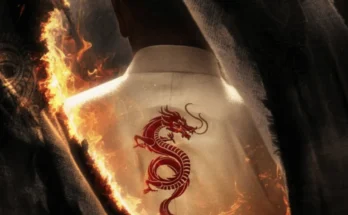Abstract
The lack of profundity in the research records of the extensive twelfth-century Renaissance literature (and art)makes every written detail of it quite dithering to put an anchor against. The construction of love and romance stands quite shakily in the verses of the era, where every single addressing is made with a strong motive of enlightenment. Since every aspect of the artistic grandeur saw a reformation, and so did the “facade” of a so-called civilisation where knighthood was ambiguously equated with moral and sentimental zeniths of a man’s existence, the poems of the female writers posited a new compulsion of including a reciprocated love affair among the postulates of successful knighthood, which, in fact, became a stunning method of implementing an extremely table-turning event of women empowerment, without a label. This article is an effort to justify this connection with valid instances, being biased to Lais of Marie de France, who was a revolutionary and more importantly, a woman herself. Her “audacity” to propagate novelty in the courtly romances of the twelfth century England, coupled with her French genesis, established an incorrigible milestone on the pathway of initiation of what we address today as Feminism.
Intriguing as it seems, the popularity of Marie as a poet in an era of unapologetic male-dominance in almost every sphere of existence was undoubtedly a gargantuan reformation when imagining women in seats of power and creative exuberance was not a popular construct, the aftermath of which can be seen to be reflected in literary evidence like Kundrun where the shared political and social authorities between the heroes and the heroines do not stand strong for long and the women are provided, merely, a consolation to stretch, quite efficiently, what had already been designed by their heroes, “including the unquestioned patriarchal dominance over females” (Frakes)
A desperate analysis of the late twelfth century courtly romances like Wolfram von Eschenbach’s Parzival, would reveal the gravity of the patriarchal canopy over the Arthurian court of unity, civility, gratitude and perfection. Although the scrutiny of literary sources does not yield into any uniformity of opinions, since some of them contain records of fluidity in women’s “freedom”, of particularly nuns in the many convents that existed throughout the eleventh and twelfth centuries, turned toward artistic production, either weaving, painting, music, calligraphy and poetry until they started gathering for political identification and manifestos.
Marie de France took a leap further as she, quite unfailingly, declared her opinions on the doubly unattainable political gestures of the court, which was garbed with the superior notions of chivalry, romance, aristocracy and church binaries, in her literary explorations, Lais being a loud one among them. Marie’s liabilities stood not as a separate set of ideals but her “masculine” approach towards her arguments that were crystallized with sharply critical and absolutely authentic debates, stood flamboyantly at par with the pre-existing, highly biased social and political propagandas- representing novelty and hence interrogations, “I received from God the gift of knowledge and true eloquence” (Marie).
These liabilities, quite undaunted by the accomplishments of ancient thinkers and writers, necessarily male, demanded a “renaissance” to shift from the orality of the English poetic tradition which, she, being of French origin, had heard herself, to a written and hence, a stronger version of poetic justification, forming Lais. This verse was dedicated to the king himself (Henry II of England), thus making herself directly affiliated to the strongest man in the society, putting the readers in awe to this date.
The conundrums of recognition in a romantic intertwining between two lovers, regardless of the symmetry of reciprocity, stand as fickle as the flame on a candle, which is given more grandiosity and attention when the man in love is a knight- an epitome of gallantry, perfection and manhood. Not until the late eleventh century was a man, with badges and stars on his uniform, compelled to consider a romantic fulfilment to prove the sanctity of his achievements, which then became a desperately necessary parameter, enough to let their beloveds (regardless of their backgrounds) gain access to a livelihood that demanded respect, recognition, identity and quite contradictorily, servitude. As Herman R. Lantz points out how “aristocratic women could no longer be treated as property”, the respect for knighthood included a category of showing considerable generosity towards love and commitment which, for the first time, eradicated the notion of an immediate marital unification and hence, no objectification of women and more importantly, enough scope for them to think, examine and make ultimate decisions for their own lives and that of their lovers or the men-in-waiting. Like every other column of the court, this policy of a romantic justification of men’s chivalry engulfed quite a weighty number of pens that would write verses. Marie’s Lais is no exception. Loyally following Bamberg’s or Hildegard’s priority of the poet’s “vision”, Lais does not just deconstruct manhood by exposing the power of romance over men but also justifies the “wrong” forms of love and wooing, like adultery where marriage stands as a weak gateway of moral obligations.
The power of romance can be seen in the “Lay of Equitan” where the knight has been pierced deeply by Cupid’s arrow and experiencing his lady’s indifference, is drained of all his gallantry and stature, “and from thenceforth he cared nothing for measure… He heard nothing, and nothing he could do”. The woman’s impact is given enormous authority, capable of making her knight stop regarding all the other significant aspects of his courtly life. She becomes the focal point for the measurement of a man’s gallantry and ranking in society. The social pressure that chivalry placed on finding love, rather a reciprocated love, conditioned men to prioritize winning a woman’s heart, even at the loss of their own power or status, unknowingly empowering women and giving them the key to all their locks of perfecting knighthood. Marie puts more emphasis as she describes Guigemar (in “Lay of Guigemar”) who is the perfection in civility, but is in love with a married woman who is a captive in her husband’s den, thus, allowing a smooth flow of adultery but with the purpose of freeing the woman, taking an extremely audacious initiative to put forward the possibility of binaries within a single-gender where men are capable of both giving and taking away freedom. Their separation remains inevitable even after which, the lovers choose to remain loyal to each other attaching a magnificent feather of fulfilment to the man’s cap of knighthood. Marie symbolizes the importance of the woman’s consent in the affair, where the man-in-arms does not proceed with his proposal without his lady-love’s nod, determining respect, freedom and empowerment.
More fascinating gestures in romance can be observed when, for the first time, the woman takes charge of the romantic initiation between her and the man of her choice. Two shields are thus taken off the sword of orthodoxy, one being the woman’s right to make a choice of her own and secondly, the authority to confess her love to her chosen man even before he does it, when they were, till now, commonly married off for the political benefit or security of their families, mostly their fathers. In the Lays of Milon and Eliduc, as Lantz says, “individual rights and feelings in the mate selection process” is seen to be evolving when the ladies in question break free of their families, resonating the breakaway from the societal hunt. Lay of the Two Lovers, also strengthens this freedom of the lady who schemes with her lover, to escape her father’s refusal and marry in secrecy, a marriage where more authority is given to her who often rules territories upon the absence of her husband and has considerable influence over him. Marie also talks about the maturity of the women characters who are capable of running polities and governments, more efficiently than their male-counterparts, lovers or husbands (and kings), quite rightfully pointed by Sharon Kinoshita when she says “married women would function quite independently, choosing to leave the marriage for their own reasons.”
Peter Lombard’s commentary on the analysis of the twelfth-century romances, “The efficient cause of matrimony is consent”, aligns, quite objectively, to not just a legal knot of ownership but also the reach of this consent being available to all the empowering doors that were opened by the women-poets of the era. This empowerment did not ask for a movement, or a specific day to come into effect, neither was an initiation this bombarding, was an easy one to formulate. It happened with instincts, a will to speak imperatively and a handful of ears who would pay heed to such rhetoric, romantic rhetoric. Marie’s deliberate attempt to put a woman character in dominance in each of the Lais can be critiqued for an unequal distribution of authority if seen from a feministic point of questioning, but her effort in opening such multiple perspectives gives us an image of how the romantic lives of women operate within courtly society, within marriage, in their relationship with their parents, and how they respond to men’s erotic wooing. Marie repudiates the venomously aggressive knightly endeavours of the society and deliberately makes an attempt to represent her male protagonists as weak, “luckless, landless soldiers of fortune, struggling against the actual hazards and miseries of the profession of arms” (Marcelle Thiebaux) and normalises the possibility of the other forms of behaviour and characteristic in the man-woman binary with revolutionary promises. Courtship is a carrier of this revolution. For taking the age-old construct of women’s commodification and the continuous normalcy of the same, Marie pricks on the most sensitive nerve of the society and its restricted definitions of knighthood. She forces us to re-examine the protocols of a woman’s existence in the middle-ages when getting rid of regular diseases and paranoia of death was the main concern, coupled with one’s obsession with the Divine truth. There were, as Membrives formulates, a definite policy of “mundos femininos emancipados”, latent and withered, exposing which, a masterpiece like Lais makes it easy for later revolutionaries to look at this issue with clearer and newer turns, in the years to come.
Bibliography
- Bloch, R Howard, The Anonymous Marie de France (Chicago, 2003).
- Gay, Lucy M., ‘On the Language of Christine de Pizan. ’Modern Philology, 6 (1908), pp. 69-96.
- Griffin, Miranda., ‘Gender and Authority in the Medieval French Lai,’ Forum for Modern Language Studies, 35 (1999), pp. 42-56.
- Groag Bell, Susan., ‘Christine de Pizan (1364-1430): Humanism and the Problem of a Studious Woman.’ Feminist Studies, 3 (1976), pp. 173-184.
- Holmes, U.T., ‘New Thoughts on Marie de France, ’Studies in Philology, 29 (1932), pp. 1-10.
.



